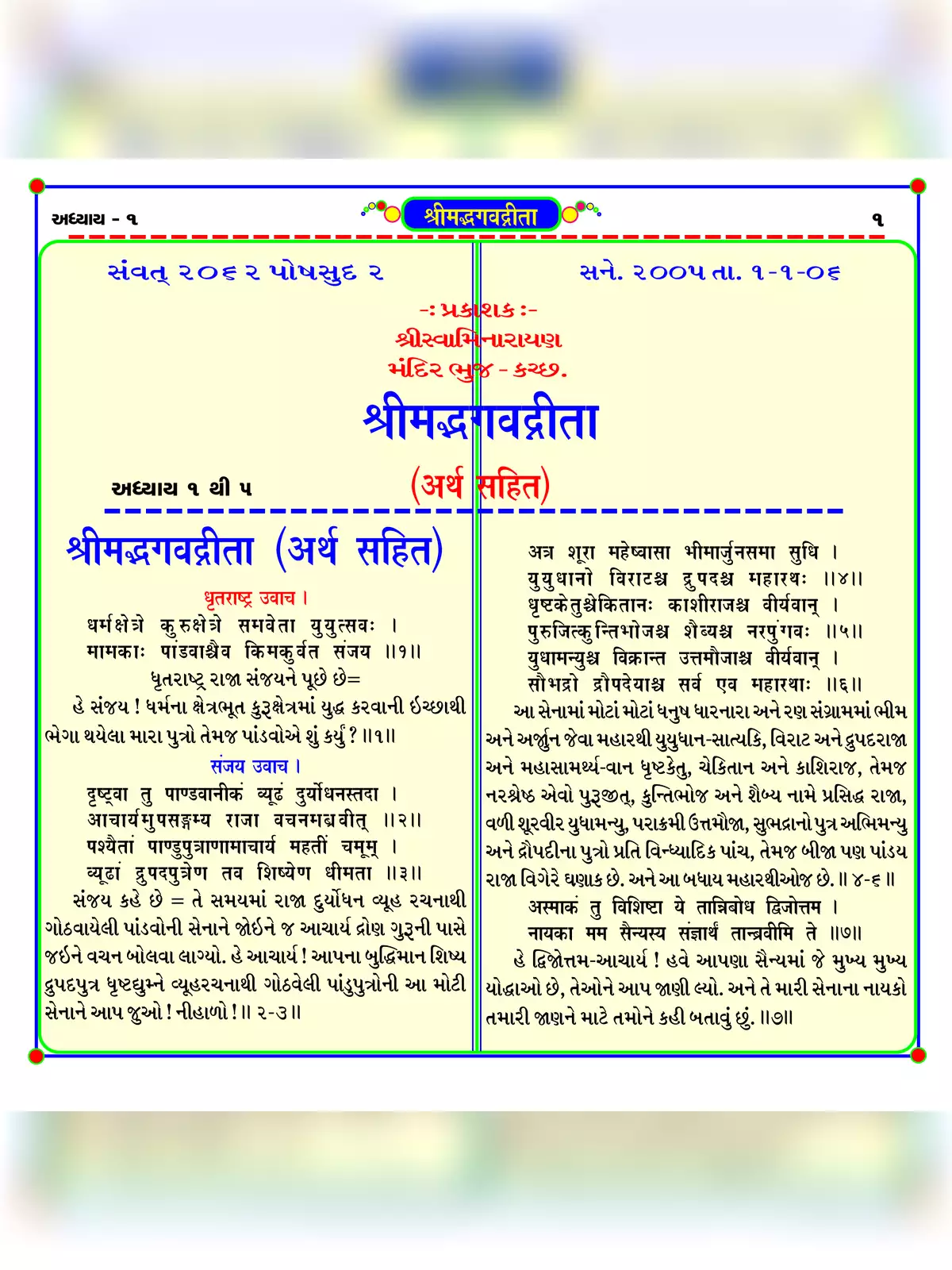Bhagavad Gita Spiritual Wisdom 2025 - Summary
The Bhagavad Gita is an ancient Indian scripture very important to Hindu spirituality, known for its deep philosophical and literary value. Written between 400 BCE and 200 CE, this sacred text has a timeless origin, similar to the respected Vedas and Upanishads. If you want to learn from its teachings, you can easily download the PDF of the Bhagavad Gita in Gujarati by using the link at the bottom of this page.
Understanding the Bhagavad Gita
Often called the Song of God, the Bhagavad Gita combines important Hindu principles like dharma (righteous duty), bhakti (devotion), and moksha (liberation). The word ‘Gita’ means ‘song’, and ‘Bhagavad’ refers to the Supreme Divine. This ancient scripture shares spiritual wisdom that continues to guide people towards knowledge (jnana), devotion (bhakti), right action (karma), and meditation (Raja Yoga), especially shown in its 6th chapter. These teachings connect with ideas from the Samkhya-Yoga philosophy, offering guidance for living a balanced and meaningful life.
The Timeless Lessons of the Gita
The core of the Bhagavad Gita is the sacred talk between Prince Arjuna and Lord Krishna, his divine charioteer. At the start of the great Dharma Yudhha (righteous war) between the Pandavas and the Kauravas, Arjuna feels sorrow and doubt about fighting his own relatives. Through their conversation, Lord Krishna gives deep spiritual advice, addressing moral questions, the nature of the self, and the path to freedom beyond worldly struggles.
Known as one of the most important scriptures in Hinduism, the Bhagavad Gita inspires and shapes many spiritual paths within the tradition and continues to be a source of wisdom through the years.
If you want to study this sacred text, you can download the PDF of the Bhagavad Gita in Gujarati or read it free online by using the link below.
